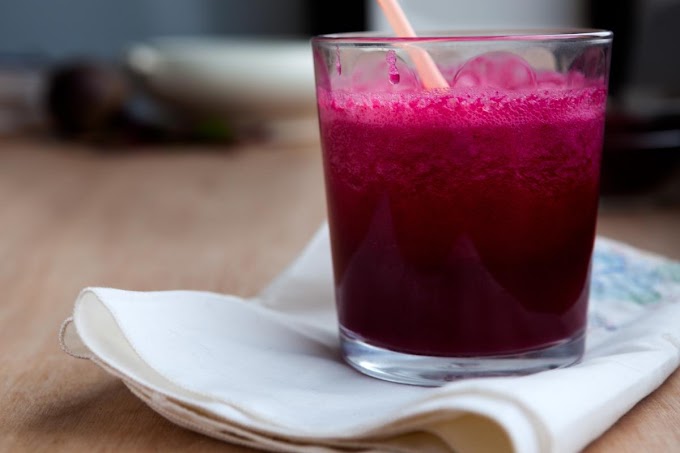Why Make Macaroni Pasta at Home?
Homemade pasta dishes are a satisfying choice because they give you complete control over the ingredients, flavors, and nutrients. Store-bought pasta can be convenient, but making it yourself with fresh vegetables adds a personal touch and ensures the best quality. Plus, incorporating a wide range of vegetables ensures that the dish is packed with vitamins, minerals, and antioxidants.
Benefits of Adding Vegetables
Vegetables are a rich source of essential nutrients like fiber, vitamins, and minerals. Including them in your macaroni pasta not only boosts the dish's nutritional value but also adds diverse flavors, colors, and textures. Some of the vegetables you can use include:
Bell peppers: High in vitamin C, they add a sweet crunch to the pasta.
Zucchini: Low in calories and a great source of vitamin A.
Spinach: Rich in iron and vitamin K, adding a lovely green color.
Broccoli: Packed with fiber and vitamin C, it offers a slightly bitter but satisfying flavor.
Tomatoes: Add a tangy and juicy taste while also contributing antioxidants like lycopene.
Carrots: Full of beta-carotene, they add sweetness and a splash of orange.
Now, let's move on to the actual process of making macaroni pasta with an abundance of vegetables.
Ingredients
Before you start, gather all the ingredients. Here’s a comprehensive list:
For the Macaroni Pasta:
2 cups of dried macaroni pasta (You can also use whole wheat or gluten-free pasta depending on your preference)
1 tablespoon of olive oil
4-5 cups of water
Salt (to taste)
For the Vegetable Sauce:
1 tablespoon of olive oil
1 large onion, finely chopped
3-4 garlic cloves, minced
1 cup of chopped bell peppers (red, green, yellow)
1 cup of zucchini, sliced into half moons
1 cup of cherry tomatoes, halved or diced tomatoes
1 cup of spinach, washed and chopped
1/2 cup of carrots, thinly sliced
1 cup of broccoli florets
1/2 cup of peas (optional)
1/4 teaspoon of black pepper
1 teaspoon of dried oregano
1/2 teaspoon of dried basil
1 teaspoon of chili flakes (optional, if you want a spicy kick)
1/2 cup of grated Parmesan cheese (optional, for topping)
Fresh basil or parsley for garnish
Step-by-Step Recipe to Make Macaroni Pasta with Vegetables
Step 1: Cooking the Macaroni Pasta
Boil water: In a large pot, bring 4-5 cups of water to a rolling boil. Add a pinch of salt to the water.
Cook the pasta: Once the water starts boiling, add the macaroni pasta. Stir occasionally to prevent the pasta from sticking. Cook for 8-10 minutes or until the pasta is al dente (firm to the bite). Check the package instructions for specific cooking times, but typically, macaroni takes about 9 minutes to cook.
Drain and set aside: Once the pasta is cooked, drain it using a colander and drizzle a tablespoon of olive oil over it. This prevents the pasta from clumping together while you prepare the vegetable sauce.
Step 2: Preparing the Vegetable Sauce
Heat olive oil: In a large pan or skillet, heat one tablespoon of olive oil over medium heat.
Sauté onions and garlic: Add the finely chopped onions and minced garlic to the hot oil. Sauté until the onions become translucent and the garlic releases its aroma, which should take about 2-3 minutes.
Add harder vegetables first: Begin by adding the carrots and broccoli to the pan. Since these vegetables take longer to cook, give them a head start by sautéing them for about 4-5 minutes, stirring occasionally.
Incorporate other vegetables: Next, add the bell peppers and zucchini, cooking for another 3 minutes until they start to soften.
Add tomatoes and spinach: Finally, add the halved cherry tomatoes and chopped spinach. These vegetables cook quickly and just need 2-3 minutes. The tomatoes should release some juice, adding moisture to the dish, while the spinach will wilt down.
Season the vegetables: Sprinkle black pepper, dried oregano, dried basil, and chili flakes (if using). Stir well to ensure all the vegetables are evenly coated with the seasonings.
Step 3: Combining Pasta with Vegetables
Mix the pasta with vegetables: Once the vegetables are cooked and well-seasoned, lower the heat and add the cooked macaroni pasta to the pan. Toss everything together so that the vegetables mix thoroughly with the pasta.
Taste and adjust: Taste the pasta and adjust the seasoning by adding salt or more herbs if necessary.
Optional toppings: If you like, sprinkle grated Parmesan cheese on top for a rich and creamy flavor. You can also garnish the dish with freshly chopped parsley or basil for added freshness and color.
Step 4: Serve and Enjoy!
Your homemade macaroni pasta with a rainbow of vegetables is now ready to serve! You can enjoy this dish on its own or pair it with a side of garlic bread or a light green salad.
Tips and Variations
Here are a few additional tips and variations to make your pasta dish more exciting and customized to your taste:
1. Add Protein
If you want to make the dish heartier, consider adding some protein to it. Grilled chicken, shrimp, or tofu can be tossed into the mix. For vegetarians, chickpeas or white beans are great plant-based protein options that go well with pasta.
2. Make It Creamy
If you prefer a creamier texture, you can add a splash of cream or coconut milk to the vegetable sauce, giving it a rich consistency. A dairy-free option like almond or soy milk also works well.
3. Use Whole Wheat or Gluten-Free Pasta
To make the dish healthier, you can substitute regular pasta with whole wheat or gluten-free varieties. Whole wheat pasta adds more fiber and a nuttier flavor, while gluten-free options cater to those with dietary restrictions.
4. Experiment with Vegetables
Feel free to swap out or add more vegetables based on your preferences and what’s in season. Mushrooms, eggplant, asparagus, or even roasted butternut squash can add new dimensions to your pasta dish.
Conclusion
Making macaroni pasta at home with a variety of vegetables is not only easy but also a fun way to include a wide range of nutrients in one delicious meal. This recipe is highly versatile, so feel free to adjust the vegetables and seasonings according to your personal taste. Whether you're looking for a comforting meal or a nutritious lunch, this veggie-packed macaroni pasta will certainly hit the spot. Enjoy your homemade creation!








Social Plugin